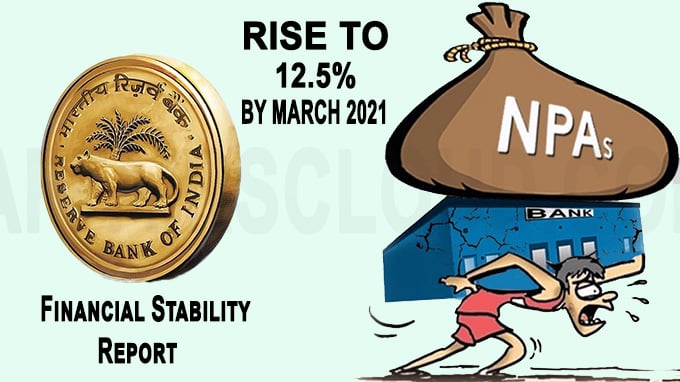
- While Public sector banks’ (PSBs) gross bad loans ratio of 11.3% at the end of March, 2020 may increase to 15.2% by March 2021 under the baseline scenario, on the other hand, Private banks may see an increase from 4.2% to 7.3%.
Key Points:
–Capital to risk-weighted assets ratio (CRAR) of SCBs declined to 14.8% in March 2020 from 15% in September 2019. This ratio could slide to “13.3% in March 2021 under the baseline scenario and to 11.8% under the very severe stress scenario.
–Gross non-performing asset (GNPA) ratio of SCBs declined to 8.5% from 9.3%.
–Provision coverage ratio (PCR) of SCBs improved to 65.4% from 61.6% over this period.
–Gross Domestic Product (GDP) will decline to 8.9% in 2020-21. In the baseline case, the GDP is assumed to contract 4.4%.
–System-level capital adequacy ratio (ratio of capital to advances) may drop from 14.6% in March 2020 to 13.3% by March 2021 under the baseline scenario and to 11.8% under the very severe stress scenario.
-Bank credit which had considerably weakened during the first half of 2019-20, slid down further to 5.9% by March 2020 to early June 2020.
-Five banks may fail to meet the minimum capital level by March 2021 in a very severe stress scenario.
-Large borrowers (with exposure of over Rs 5 crore) accounted for 51.3% and 78.3% of the -aggregate loan portfolio and GNPAs, respectively, of SCBs in March 2020. Both these shares have declined since March 2018.
About FSR:
It reflects the collective assessment of the Sub-Committee of the Financial Stability and Development Council (FSDC) on risks to financial stability, and issues relating to development and regulation of the financial sector.
About Reserve Bank of India (RBI):
Headquarters– Mumbai, Maharashtra
Formation– 1 April 1935
Governor– Shaktikanta Das
Deputy Governors– 4 (Bibhu Prasad Kanungo, Mahesh Kumar Jain, Michael Debabrata Patra, one is yet to be appointed).
Recent Related News:
On June 8, 2020, after exercising the powers conferred by the Banking Regulation Act, 1949 and the Reserve Bank of India (RBI) Act, 1934, RBI has proposed two draft documents titled “Draft Comprehensive Framework for Sale of Loan Exposures” and “Draft Framework for Securitisation of Standard Assets” consisting of guidelines applicable to all Scheduled Commercial Banks (excluding Regional Rural Banks); All India Financial Institutions; and, all Non-Banking Financial Companies (NBFCs) including Housing Finance Companies (HFCs).